- News
- Reviews
- Bikes
- Components
- Bar tape & grips
- Bottom brackets
- Brake & gear cables
- Brake & STI levers
- Brake pads & spares
- Brakes
- Cassettes & freewheels
- Chains
- Chainsets & chainrings
- Derailleurs - front
- Derailleurs - rear
- Forks
- Gear levers & shifters
- Groupsets
- Handlebars & extensions
- Headsets
- Hubs
- Inner tubes
- Pedals
- Quick releases & skewers
- Saddles
- Seatposts
- Stems
- Wheels
- Tyres
- Tubeless valves
- Accessories
- Accessories - misc
- Computer mounts
- Bags
- Bar ends
- Bike bags & cases
- Bottle cages
- Bottles
- Cameras
- Car racks
- Child seats
- Computers
- Glasses
- GPS units
- Helmets
- Lights - front
- Lights - rear
- Lights - sets
- Locks
- Mirrors
- Mudguards
- Racks
- Pumps & CO2 inflators
- Puncture kits
- Reflectives
- Smart watches
- Stands and racks
- Trailers
- Clothing
- Health, fitness and nutrition
- Tools and workshop
- Miscellaneous
- Buyers Guides
- Features
- Forum
- Recommends
- Podcast
review
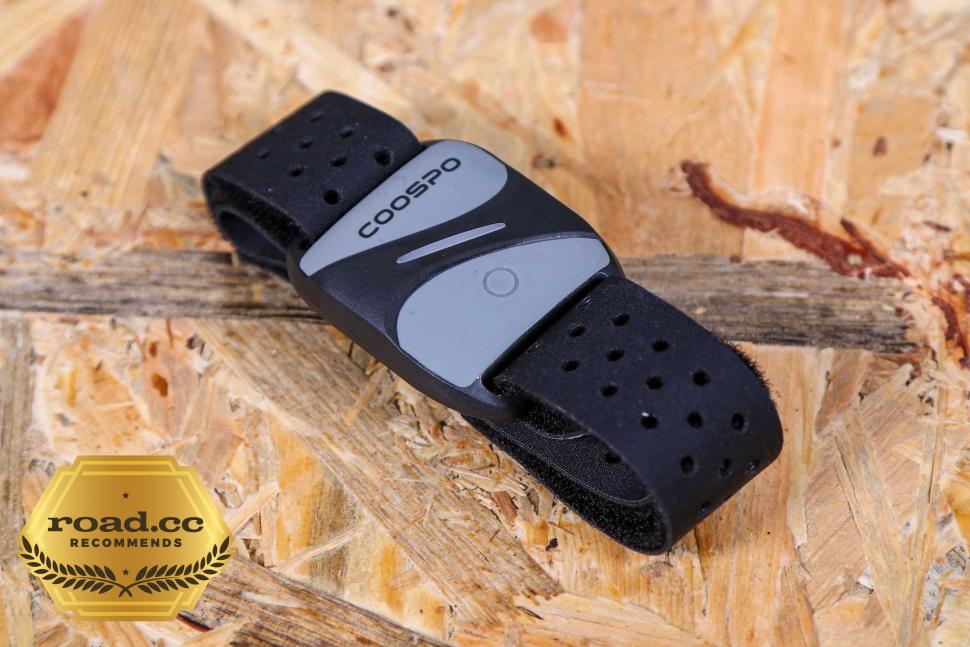 Coospo HW807 Heart Rate Monitor Armband
Coospo HW807 Heart Rate Monitor Armband£49.99
VERDICT:
LED-based heart rate sensor that's easy to live with
Accurate
Easy to use
Rechargeable (unlike chest ones)
Comfortable
Needs recharging (unlike chest ones)
Heart rate zone colours a bit gimmicky
Weight:
10g
Contact:

This product has been selected to feature in road.cc recommends. That means it's not just scored well, but we think it stands out as special. Go to road.cc recommends
At road.cc every product is thoroughly tested for as long as it takes to get a proper insight into how well it works. Our reviewers are experienced cyclists that we trust to be objective. While we strive to ensure that opinions expressed are backed up by facts, reviews are by their nature an informed opinion, not a definitive verdict. We don't intentionally try to break anything (except locks) but we do try to look for weak points in any design. The overall score is not just an average of the other scores: it reflects both a product's function and value – with value determined by how a product compares with items of similar spec, quality, and price.
What the road.cc scores meanGood scores are more common than bad, because fortunately good products are more common than bad.
- Exceptional
- Excellent
- Very Good
- Good
- Quite good
- Average
- Not so good
- Poor
- Bad
- Appalling
The Coospo HW807 is a comfortable, accurate heart rate sensor that you wear round your arm. It's easy to live with and produces data that's comparable to the numbers you get from a chest-strap heart rate sensor.
If you don't like chest-strap heart rate sensors (and let's face it, does anyone like wearing a strap round their chest?) this is a great alternative. The data it yields tracks very closely that from a chest strap sensor.
> Buy now: Coospo HW807 from Amazon for £43.99
Here's a typical comparison of the heart rate data from the HW807 (red line), a Garmin chest-strap sensor (purple line) and, just for giggles, a Garmin Forerunner 45 that I mostly use for dog walks (blue line).
The Garmin sensor and the Coospo track each other pretty damn closely. Since I don't run (unless someone scary is after me) I don't use the Forerunner 45 as any sort of training aid, but I'm still surprised that it's a bit laggy and occasionally glitchy compared to both the Coospo and the Garmin sensors. Given the Forerunner also uses an optical sensor, you'd expect it to be very close to the Coospo, but the Coospo is clearly better.
How it works
Your typical chest-strap heart rate sensor is simple: you put it on, and it starts broadcasting your data to any ANT+ or Bluetooth device in range. Set your device to detect it, pair them and you're away. With the HW807 there's an extra step: you have to turn it on first.
The built-in lithium-ion battery is small (Coospo claims its 90mAh capacity translates to a 20-hour battery life), and while that means the unit's about two-thirds the size of a chest strap's transmitter, it also means you can't squander power waiting for action.
The HW807 measures heart rate using a technique called photoplethysmography or (mercifully) PPG for short. In the last few years PPG sensors have popped up everywhere. If you've got any sort of recent fitness tracker or smart watch, odds-on it's got LEDs on the back that shine into your skin, and photosensors that use the reflections to measure changes in volume to your blood vessels as your heart beats. Bosh – pulse measurement.
Be still, my beating heart
But PPG needs more power than passive detection of the heart's own electrical signals, which is how most chest-strap heart rate sensors work. A CR2032 coin cell (capacity about 240mAh) will power a chest strap electrocardiographic (ECG) sensor for ages, but in a PPG sensor it would need replacing every 50 hours.
To charge the HW807, you use the included magnetic charging cable. It's similar to the cables for many budget smart watches, but the pins are further apart than most – they have 10mm centres rather than the more common 4mm, 6mm and 7.62mm. That means you don't want to lose the supplied cable as you might struggle to find a replacement.
The HW807 has another trick: its flashing LED changes colour to indicate your heart rate zone. However, its zones are based on a maximum heart rate of 180bpm, and there doesn't seem to be a way of changing that. It also buzzes to let you know if your heart rate exceeds 180. I'm pretty sure if my heart rate ever hits 180 I'll know about it without being told by an electronic widget.
On the other hand I used to ride with someone whose maximum pulse was well over 200, and she'd have set this alarm off on every hill as she blasted past me.
> 15 best heart rate monitors for cycling – get useful fitness data
You're supposed to wear the HW807 round your upper arm or the thicker part of your forearm. I found the strap was too long for my wrist when I tried it watch-style, but it worked fine when pushed a little way up my forearm.
If you leave it switched on but off your wrist it turns itself off after a short while, and it vibrates and flashes its LED red to let you know it's done it. This can be quite startling when it's on a hard surface right in front of you and you're not expecting it...
Value
Fifty quid seems like a lot to pay for a single-function device. You can get an ECG-type chest-strap heart rate sensor for £20 from Halfords or £29.99 from Decathlon.
Alternatively, for not much over £100 you can find a complete Garmin Forerunner 45 GPS watch, with a metric buttload of extra fitness and health tracking features, and which – like all recent Garmin wearables – can be set to broadcast your pulse for an ANT+ computer to pick up.
However, if accurate heart rate data matters to you, then the HW807 is the better purchase as it closely tracked the data from the chest straps I used for comparison, and beat the Garmin Forerunner 45. Interestingly I found the Forerunner was slightly less accurate when I overtightened the strap looking for a better coupling between its PPG sensor and my skin.
And it's perhaps a silly reason to like a product, but I really like that I can put on the Coospo HW807 after I've pulled on the bib shorts, jersey and the rest. If you've ever had that 'Oh bollocks, forgot my heart rate strap' moment after you've dressed for a ride, you know what I'm talking about.
Who should buy the Coospo HW807?
Basically, anyone who wants accurate heart rate data from an easy-to-use sensor that doesn't feel like it's constricting your breathing. It's become my go-to not least because, as a fat biffer, I really don't find chest straps comfortable these days.
Verdict
LED-based heart rate sensor that's easy to live with
road.cc test report
Make and model: Coospo HW807 Heart Rate Monitor Armband
Size tested: N/A
Tell us what the product is for and who it's aimed at. What do the manufacturers say about it? How does that compare to your own feelings about it?
It's for measuring your heart activity during exercise, using an optical sensor so it fits on your arm rather than having to go round your chest. It works well.
Coospo says: "HW807 is a heart rate armband designed for professional trainers who need efficient, concrete, scientific training. Combining with Heart Rate Zone(HRZ), HW807 will help you get better performance on training.
"HW807 equips with a 5-color LED indicator light for Heart Rate Zone Training. You can check your real-time heart rate zone by LED color instead of checking your smartphone."
Tell us some more about the technical aspects of the product?
Coospo lists the technical details thus:
Body dimensions(LxWxH)
43.00*36.00*12.50mm
Weight
19g
Battery
Rechargeable lithium battery 90 mAh
Battery Life
20 hours
Wireless connections
Bluetooth5.0, ANT+
HRV
Yes
LED indicator
Yes
Charging method
Magnetic USB Charging
Operating Temperature
-10℃~ 50℃
Rate the product for quality of construction:
8/10
Rate the product for performance:
9/10
Rate the product for durability:
9/10
Rate the product for weight (if applicable)
9/10
Rate the product for comfort (if applicable)
10/10
Much comfier than a chest strap.
Rate the product for value:
6/10
More expensive than a basic chest strap, but a lot nicer to use, which makes it worth the money in my book.
Tell us how the product performed overall when used for its designed purpose
Very well; it's accurate and easy to use.
Tell us what you particularly liked about the product
Not having something strapped round my chest; being able to put it on after bibs, jersey etc.
Tell us what you particularly disliked about the product
Nothing.
How does the price compare to that of similar products in the market, including ones recently tested on road.cc?
A Wahoo Tickr Fit will cost you £64.99; Polar's Verity Sense is £76.50, though both of them have internal data storage so you can use them for swimming without needing to be paired to a receiver. Or you can pay £79.95 for a Scosche Rhythm24 (you can also pay £171 for it if you trust Amazon's search rather than digging through to the actual Scosche store).
If you just want heart rate transmitted to your bike computer, the Coospo is a bargain.
Did you enjoy using the product? Yes
Would you consider buying the product? Yes
Would you recommend the product to a friend? Yes
Use this box to explain your overall score
This is simply an excellent, easy-to-use little widget.
About the tester
Age: 55
I usually ride: Scapin Style My best bike is:
I've been riding for: Over 20 years I ride: Most days I would class myself as: Expert
I regularly do the following types of riding: commuting, touring, club rides, general fitness riding, mtb,
John has been writing about bikes and cycling for over 30 years since discovering that people were mug enough to pay him for it rather than expecting him to do an honest day's work.
He was heavily involved in the mountain bike boom of the late 1980s as a racer, team manager and race promoter, and that led to writing for Mountain Biking UK magazine shortly after its inception. He got the gig by phoning up the editor and telling him the magazine was rubbish and he could do better. Rather than telling him to get lost, MBUK editor Tym Manley called John’s bluff and the rest is history.
Since then he has worked on MTB Pro magazine and was editor of Maximum Mountain Bike and Australian Mountain Bike magazines, before switching to the web in 2000 to work for CyclingNews.com. Along with road.cc founder Tony Farrelly, John was on the launch team for BikeRadar.com and subsequently became editor in chief of Future Publishing’s group of cycling magazines and websites, including Cycling Plus, MBUK, What Mountain Bike and Procycling.
John has also written for Cyclist magazine, edited the BikeMagic website and was founding editor of TotalWomensCycling.com before handing over to someone far more representative of the site's main audience.
He joined road.cc in 2013. He lives in Cambridge where the lack of hills is more than made up for by the headwinds.
Latest Comments
- RobD 5 sec ago
It's a real shame, his bikes seem incredible, I've dreamt of owning one for a long time. Really sad that he's had customers let him down repeatedly...
- Rendel Harris 9 min 4 sec ago
I don't believe that additional taxation is going to make a huge amount of difference for many SUV devotees; someone who can afford £100,000 plus...
- Rendel Harris 26 min 17 sec ago
Mrs H suffers when wearing narrow shoes, just bought her a pair of Giro Berms which she loves and apparently are very comfortable (purchased thanks...
- David9694 47 min 11 sec ago
Car smashes into wall near Exeter Cathedral...
- David9694 57 min ago
Driver Who Broke Runner's Spine in Three Places Praised for Waiting Around Until Help Arrived
- Steve K 1 hour 33 min ago
Even if this gets to 100,000 signatures, I suspect the Petitions Committee will simply say there has already been a debate, so no need for another...
- Prosper0 9 hours 25 min ago
Just doing the Lord's work in case anyone's interested in this product. This Mucoff Pump is a £100 rebrand of an £85 Rockbros rebrand of a £60...
- mdavidford 10 hours 13 min ago
Obviously it means 'springing out of the bunch' on a critical sector. Or maybe it's referring to the time of year.
- David9694 11 hours 2 min ago
Woman taken to hospital after flipping car onto roof in Trowbridge...
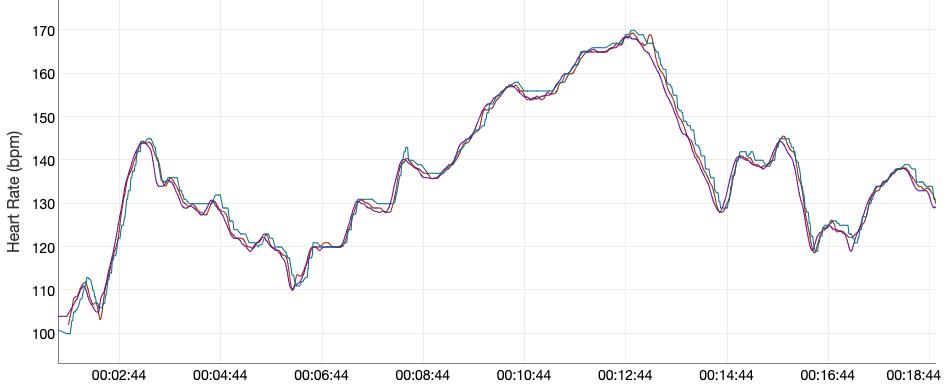




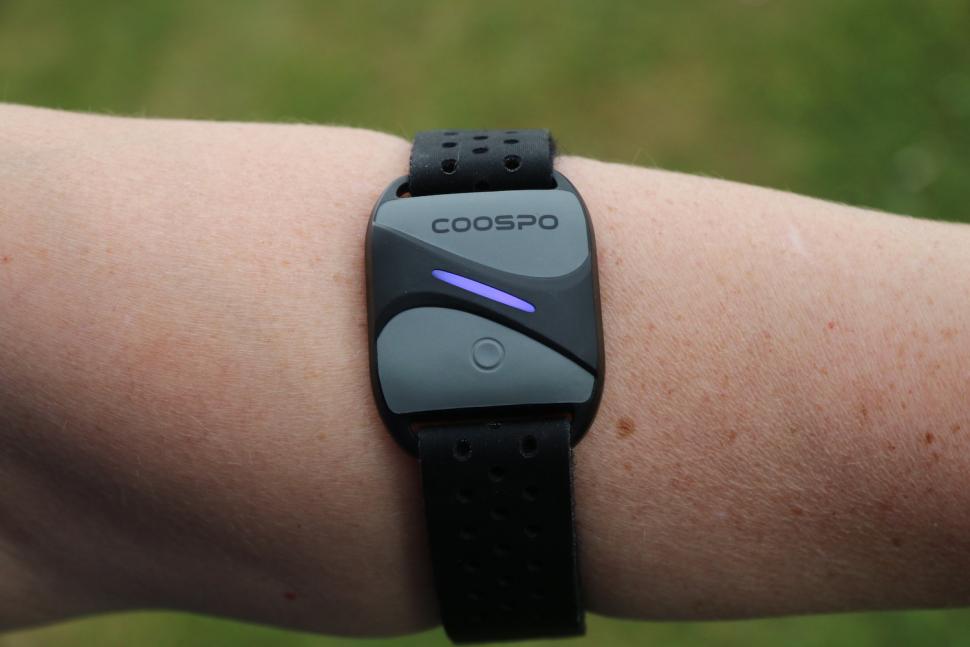

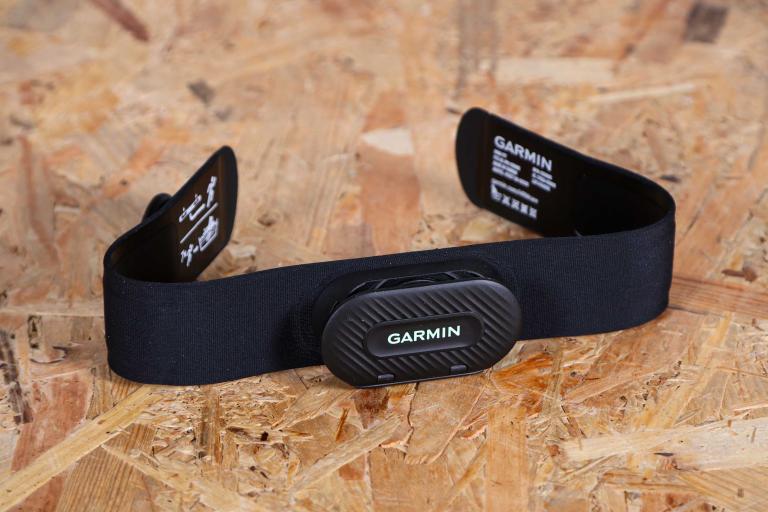

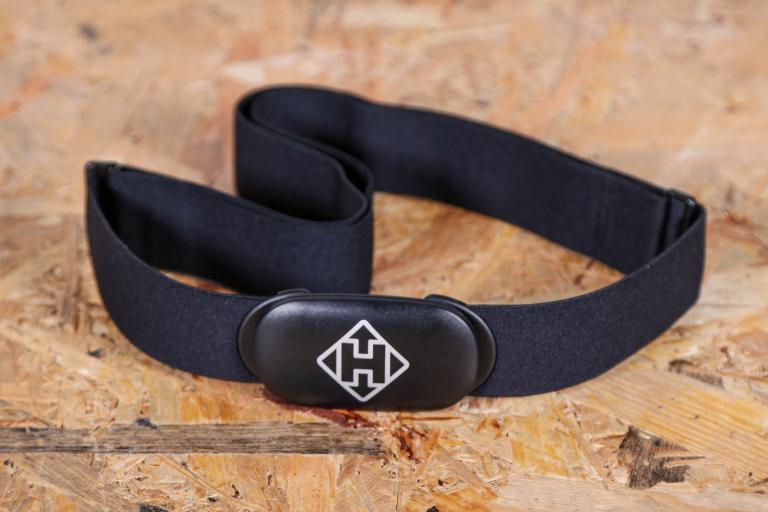
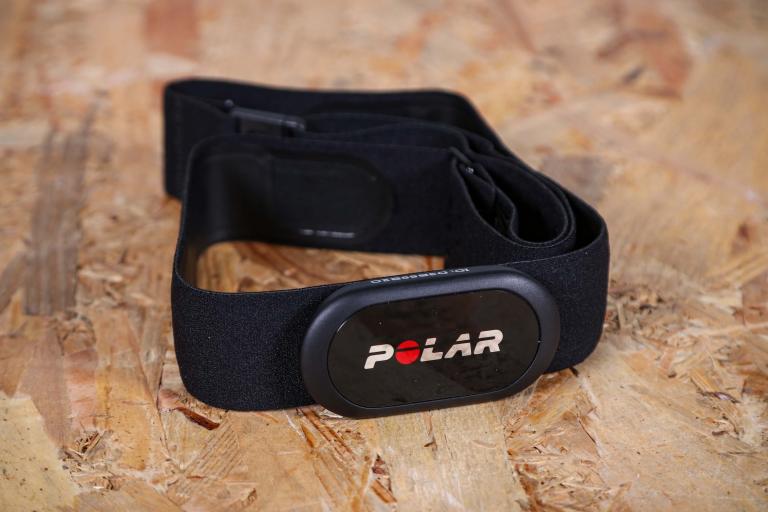
Add new comment
7 comments
Bought one out of curiosity, and I'm quite impressed. I wear it on my upper forearm when I'm Zwifting and it doesn't get anywhere near as sweaty as my Garmin chest strap.
Accuracy seems to be pretty much bang on with the readings I get from my Garmin HRM-Pro. Chargng it is no real issue. It takes literally 2 seconds to put on charge when it needs it.
Heart rate zones and alarms can be changed in the app which also has an HRV test built in.
I'll probably still use my Garmin when I'm out on the road, as I tend not to get as sweaty or work at my max as often as I do on Zwift.
Overall, a pretty good buy if you don't like sweaty chest straps.
I've been using the cheaper HW706 for a couple of years and it's been reliable enough. Seems consistent and I don't care about absolute accuracy - I know what 160 BPM as indicated by this means for me. It doesn't have any of the bells and whistles - it is just a sensor and will not warn of low battery or auto power off.
I think I paid rather less than the £40 they want now.
Not bad. If you want a better brand the Wahoo TCKR Fit is £15 dearer for a claimed 30hr battery life. I wear one for long rides but these days mostly use my Garmin Venu 2. As I'm only vaguely concerned with HR I can take any small inaccuracies- not that I have noticed any.
if you are worried about tan lines you wear it under your sleeve on the upper arm.
Similar to the Polar Verity Sense, which is also excellent and correlates very well with a Polar H10 chest strap. I also forget I'm wearing it and forget to switch it off
Pros - cheap and easy, good enough battery life to just add to the pile of things (like your watch) that you charge once a week.
Cons - potential for odd tan lines and while the HR zones thing is a nice idea it's very poorly executed if you can't adjust the HR max and has an alarm that a lot of people will trip.
The alarm part really bugs me because unless you can set it yourself (to say threshold) it's got no purpose.
I've been a fan of this style of HRM for ages for all the reasons you mention. This looks similar to mine - a Scosche Rhythm - but at about half the price. I find once it's in place on my upper arm I completely forget about it, particularly under a loose jersey, and I've ended up wearing one all day.
I've done the same with my chest strap. Once it's on its on. And it's been the same tech since what - the 90s ?
My decathlon strap is brilliant. Far better than the polar or Garmin ones.